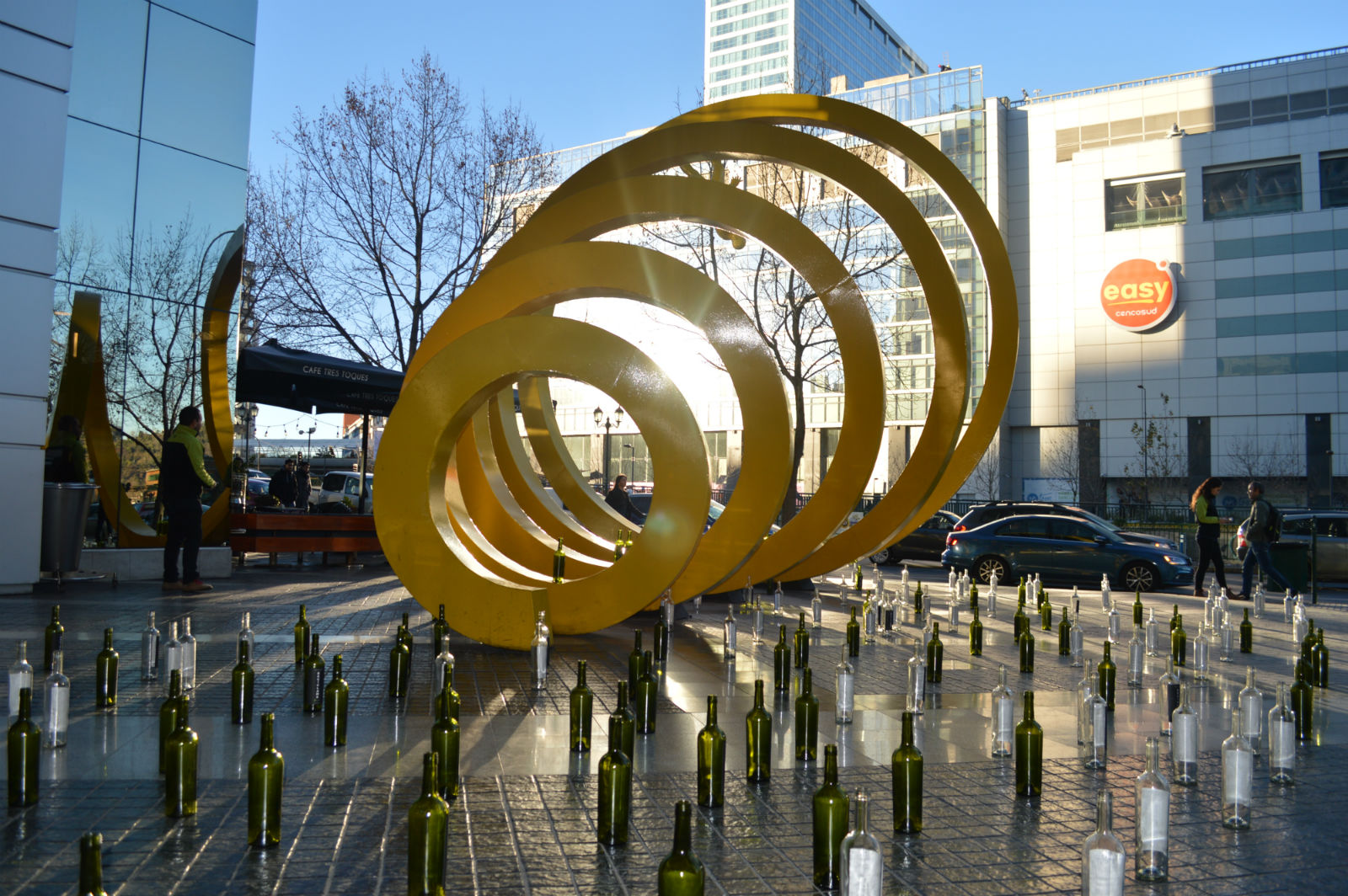- Sustainability
- August 22th, 2018
Urban intervention to encourage glass recycling
In order to promote the recycling of this material, the Sustainability area of Viña Concha y Toro, together with the WTC Community Building and Cristalerías Toro, made an urban intervention in the financial heart of Santiago.
In the place where the iconic spiral sculpture by Osvaldo Peña is located, at the World Trade Center buildings in Santiago, Viña Concha y Toro installed recycling bins, in addition to dozens of empty bottles whose labels highlighted the word “Recíclame” (Recycle me). This way, the company started its first urban intervention, where the vineyard’s headquarters are located. Its objective is to invite the community to recycle, since other office buildings can replicate these actions.

“Together with the World Trade Center community – where more than 4,000 people work – we are implementing recycling spots, starting with glass. Our goal in the short term is to transform us into an environmentally responsible community. At the same time, we want to call on the entire population to incorporate recycling as a life habit. Our best interest is that we can all reduce the generation of waste”, said Valentina Lira, Sustainability Manager at Viña Concha y Toro.
Glass: 100% recyclable
The executive of Viña Concha y Toro warns that for every ton of recycled glass it is possible to save 130 kilos of fuel and 1,200 kilos of raw material. In addition, she estimates that this action saves about 30% of energy with respect to new glass. Another important characteristic of this material is that it can be recycled as many times as necessary, since it has no limits to be reprocessed.

“Glass is a noble material that can be 100% recycled because it does not lose its properties and its quality in the process, therefore, as we recycle more objects made with this material, we can drastically reduce this type of waste”, she added.
Viña Concha y Toro uses lightweight bottles since 2010, since they produce less impact, both in production and in transport. “It takes less energy to make a bottle and the same happens when transporting it both by land and by sea, all this generates less emissions of greenhouse gases”, Valentina concluded.




